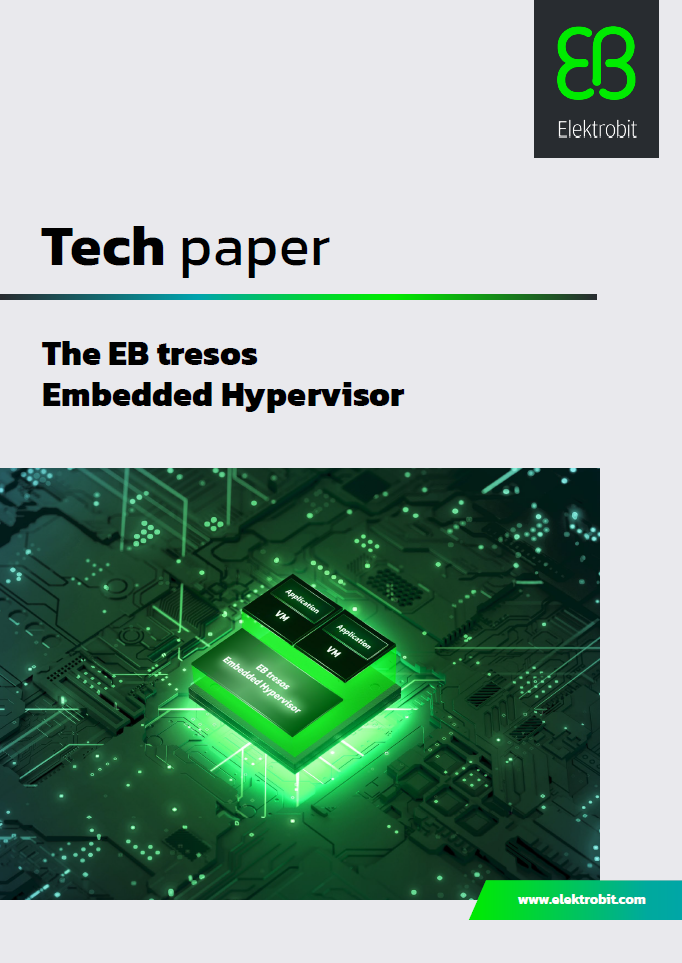In this article, we explain the importance of component separation and legacy migration and provide the solution in form of the EB tresos Embedded Hypervisor: an intelligent balance of connectivity and security.

Table of contents
- The challenges of changing vehicle architectures
- The importance of component separation and legacy migration
- Elektrobit’s solution: the EB tresos Embedded Hypervisor
- Virtual machine separation at the core level
- Customized inter-VM communication
- Real-time operation, minimal power consumption
- The rigid separation of safety-related components
- The EB tresos Embedded Hypervisor: an intelligent balance of connectivity and security
The EB tresos Embedded Hypervisor Software is increasingly driving the functionality of today’s and tomorrow’s cars. New vehicle architectures are approaching, and there is a growing need to consolidate functions and reduce the number of ECUs – not only to create more advanced electrical systems, but also to reduce weight and minimize power demand.
Automotive business models are also changing, and ‘software as a product’ is becoming more prevalent as vehicles grow in complexity. With the growing demand for shorter vehicle release cycles, manufacturers are seeking new ways to accelerate development timelines and simplify legacy migration, smoothly integrating pre-developed functions into new ECUs.
The growing intricacy of automotive software is also driving the emergence of distributed development teams working across different cities and countries, or multiple companies working together on a common project. This evolution necessitates the defined separation of software components within ECUs, yet we require mechanisms that enable communication between components for functional and efficiency reasons.
Classic AUTOSAR solution: EB tresos
Click on the button to load the content from Pardot.


